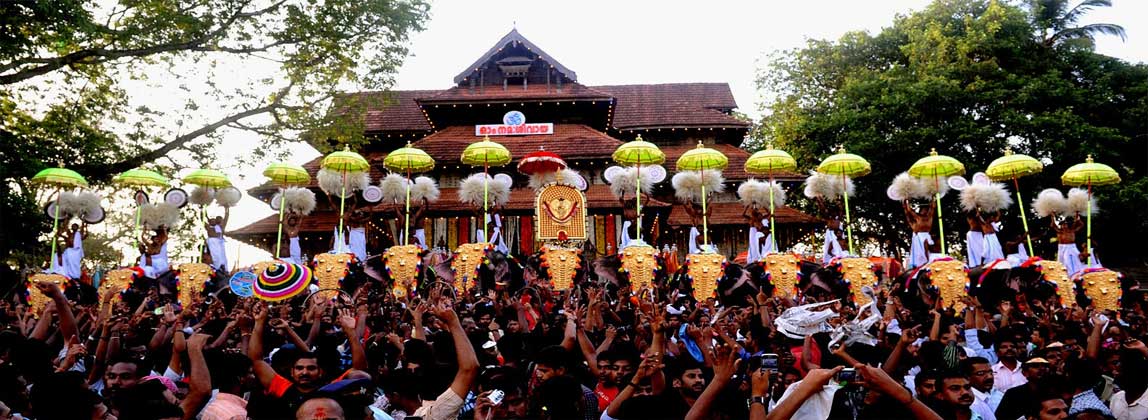


Visit the Marthoma Mariam Big Church or the Valiya Palli (big church) as it is locally known. The name is given not because of its size, but for its age and is believed to be the oldest church in these parts, dating back to when Shakthan Thampuran settled 64 Syrian Christians in Thrissur around the end of 18th century. Interestingly, parts of the Mass are still held in Syriac. The congregation still follows old rites and have no idols or pictorial representations of Christ inside the chapel, but only the cross. Here you can see huge chandeliers and coloured glass balls dangling from the ceiling, the choir's gallery and a tulip-shaped pulpit.
Thrissur Pooram Festival - Dance With The Jumbos (Held in April - May)
The Thrissur Pooram has a special charm in God's own country. Interestingly, Shakthan Thampuran conceived of the Pooram to counter what he thought was an peremptory section of the temple-owing priestly aristocracy; the pooram was to be a people's festival. Plan a holiday trip during the festival and you can behold the impressive action of beautifully caparisoned elephants as they compete to create enticing sights and sounds. The pachyderms decorated with gold ornaments, each ridden by three priests, are a sight to enjoy. In the evening the whole complex of Vadakkunathan Temple reverberates with the blaze of colourful fireworks as the Chenda Melam orchestra rise to a deafening crescendo.
Thrissur is such an encyclopedia of culture that, apparantly, you will need quite a few days to explore this treasure trove. At the heart of Thrissur, within a circular compound - Thrissur's famous round - is the Vadakkunathan Temple acting as a landmark for the visitors. Believed to have been built by no less than Parasurama, who is said to have reclaimed Kerala from the sea, this is one of the largest temples in the state. Visit the four majestic gopurams, adorned with carvings in wood and stone, that stand sentinel around the temple. Bali stones in brass are seen everywhere and stone effigies of prostrating men dot the ground.